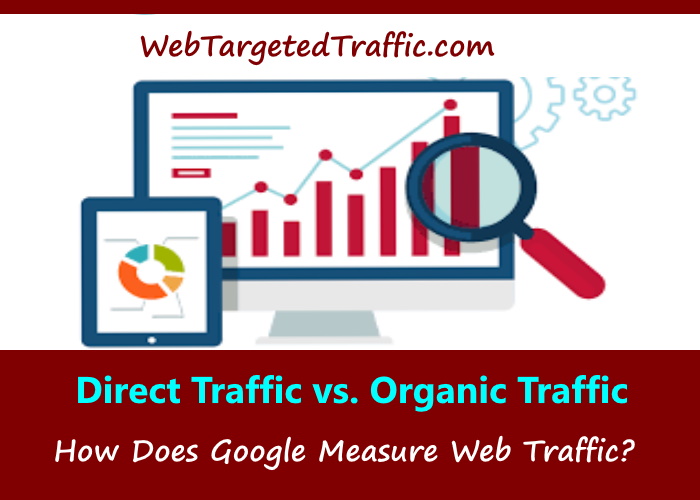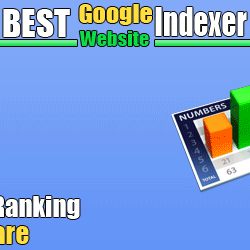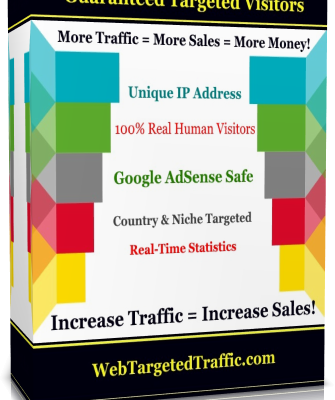Table of Contents
What is organic traffic to a website?
What is direct traffic to a website?
Direct traffic is a very important analytical measurement for any small business.
Direct traffic send massive signal to search engine that the website has authority and popularity among people.
A strong amount of direct traffic is actually a quality indicator to Google that your site is reputable and well trusted. If internet users are typing your url directly into their internet browser, it likely means they are very familiar with your brand, and didn’t need to go to a search engine to find you.
Although the goal is to get internet users to discover your website in search, having those same visitors return to your site again and again through direct traffic is very beneficial to your SEO in the long run.
The basic definition of direct traffic is a web traffic source that comes directly to your website’s landing page without first visiting another website. These consumers basically show up out of the blue, without a track of where they have been before.
With most marketing channels, it is easy to track how consumers land on your website. Search engines have very advanced website tools that can track a consumer’s movement across the Internet.
If a consumer came to your website from paid search advertising or via social traffic, you can track it. If someone landed on your website’s homepage from an email marketing newsletter, you can track that as well. Same goes for when a buyer converted off your site because of a social media post. But all goes awry when it comes to tracking the amount of direct traffic.
While yes, all traffic is good traffic, it is incredibly important to track where your traffic comes from in order to ensure you’re doing everything you can to gain more visibility online and to boost your business. Luckily, that’s where Google Analytics comes in to help.
However, Direct traffic may also consist of users who reached the site in other ways.
Other common instances of Direct traffic include:
- Clicking an untagged link from an email (depending on email provider/program)
- Clicking a link from a Microsoft Office or PDF document
- Accessing the site from a shortened URL (depending on the URL shortener)
- Clicking a link from a mobile social media apps like Facebook or Twitter. Mobile apps may not pass referrer information
- A User going to a non-secure (http) site from a link on a secure (https) site, as the secure site won’t pass a referrer to the non-secure site. For instance, if someone clicks a link on https://example.com to go to http://example2.com, the analytics for example2.com will show the session as direct
- In some situations, accessing a site from organic search may end up being reported as Direct due to browser issues. An experiment conducted by Groupon showed as much as 60% of direct traffic may be from organic search
How Does Google Measure Website Traffic?
Google Analytics (GA) is a powerful force for looking inside your website and its multiple traffic sources. When it comes to direct traffic, Google Analytics will report a traffic source as “direct” if it either has no data on how the session arrived on your website or if the web session has been configured in some way to be ignored by GA’s measurement tools.
Generally speaking, the label of direct traffic is usually given to a web session after following a sequence of checks given the information they know. The steps are as follows:
- First, they’ll check website traffic parameters to see if the session could in any way be related to a consumer converting from a paid search advertisement.
- Secondly, they’ll check if you, as the website user, has set up any campaign overrides to weed out any irrelevant known sources of traffic.
- Thirdly, GA looks at specific UTM campaign parameters set up by the owner of the site. A UTM is a small snippet of code that is attached to the end of a URL and is used to track the performance of campaigns.
- Next, GA looks into whether or not the traffic has been referred by a search engine, also known as organic traffic.
- Then, GA tracks if the user came to the website through the referral of another website, usually through the process of building links and backlinking.
- Lastly, GA determines if the user is returning to your site after a timeout period. A timeout period is defined as a customer who visits your website once, leaves, and then returns a week later due to their original organic search.
If all of these six steps cannot determine a traffic source, it will then be labeled as direct traffic.
Organic Search Traffic in Google Analytics
One of the ways to monitor your organic traffic levels is through Google Analytics.
Login to Google Analytics and navigate to ACQUISITION > ALL TRAFFIC > CHANNELS.
Look at the ORGANIC SEARCH group in the report. This is how many visits you received from organic traffic i.e. from search engines organic results.
You can also view another report by going to ACQUISITION > ALL TRAFFIC > SOURCE / MEDIUM to see exactly how much traffic you got from each search engine.
To get a full picture of brand strength in GA, we recommend combining the following sources:
- “Real” Direct traffic. Likely by homepage landing page traffic, and other pages you determine are appropriate.
- Organic traffic to the homepage. This captures people who type brand names into a search engine and click the homepage link in the search engine results.
- Traffic from Paid Search campaigns that are triggered by branded keywords. This captures the second group of brand-name-Googlers who click on paid branded ads, instead of the organic homepage listing.
Looking to boost traffic to your website?
At WebTargetedTraffic, we’ve been helping local businesses to boost their web traffic and enjoy more sales for many years. Using proven tactics, we’ve achieved countless Page One rankings for our clients, and have been rewarded with over 50 five-star Google ratings as a result.
 LEVERAGE TARGETED AFFILIATE TRAFFIC TO INCREASE YOUR WEBSITE AND BLOG TRAFFIC!
LEVERAGE TARGETED AFFILIATE TRAFFIC TO INCREASE YOUR WEBSITE AND BLOG TRAFFIC!
Buying website traffic has never been easier, get started today!
















